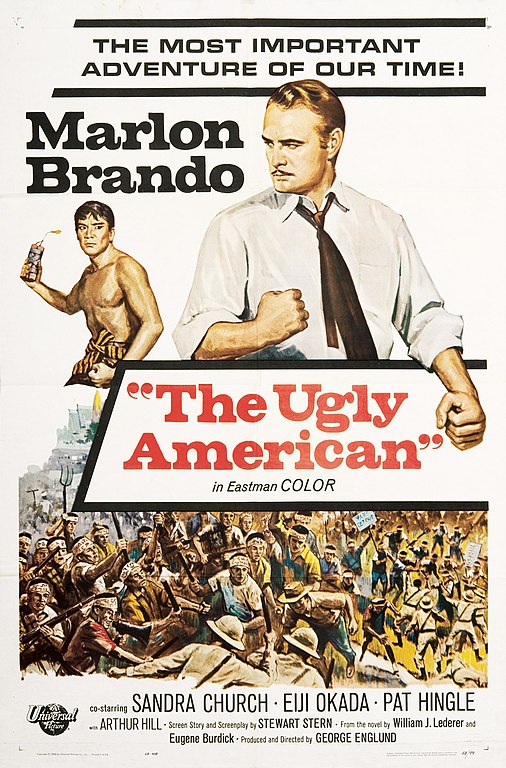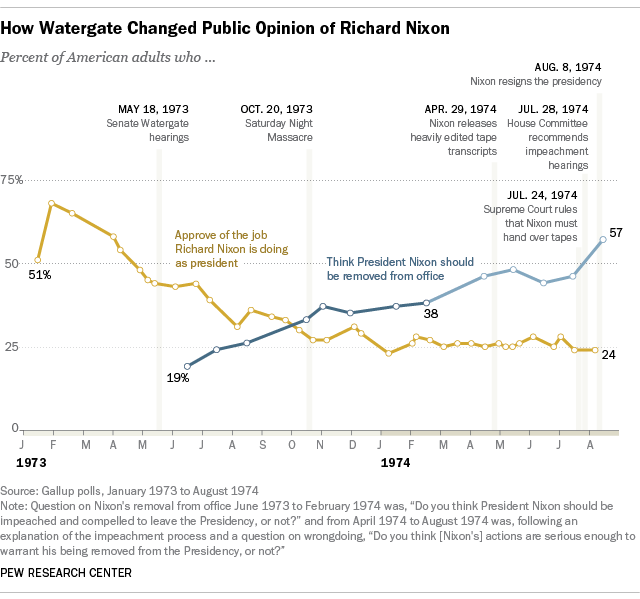Bernardo de La Paz
Bernardo de La Paz's JournalKelly Koncentration Kamps ... brought to you by Трамп-RubleCon Party aka Grumpy Old People. . . . nt
OK, looking at it at a little finer detail than I was, reading off a chart, I see that peaks were in
Jan 24, 2018 was 2872,
Sep 20, 2018 was 2941,
Apr 30, 2019 was 2953,
Jun 20, 2019 was 2965.
I don't know about closes, I am eyeballing intraday peaks and rounding last digit. I could be off by one or two and a day. Close enough we can see we are looking at the same basic data.
The point I wish to make is that tRump's stock market is chaotic and just barely eking out new highs before plunging. I do not see it as strong market. It has made four major peaks in his term so far and the latter three are hardly much higher than the first one.
I dug up some S&P500 closes, dates selected just before terms began, accounting for weekend closures:
Close Jan 16, 2009: 850.12
Close Jan 20, 2009: 805.22
Close Jan 19, 2011: 1281.92
51% rise from Jan 16 close
Close Jan 18, 2013: 1485.98
Close Jan 16, 1015: 2022.55
36% rise
Close Jan 19, 2017: 2263.69
Close Jan 19, 2019: 2670.71
18% rise
So we can see that tRump did not beat Obama in either of his first two years of terms. Even if we grant tRump his highest point in his first two years, he still can't beat Obama.
Close Sep 20, 2918: 2930.75
29% rise

Term derives from the photo, the book, and the movie
https://en.wikipedia.org/wiki/Ugly_American_(pejorative)
https://en.wikipedia.org/wiki/The_Ugly_American (book)
https://en.wikipedia.org/wiki/The_Ugly_American_(film)
The movie Sex and the City 2 has been quoted as a typical portrayal of the "ugly American" image, where Samantha, one of four best girlfriends, makes fun of Middle Eastern culture and women in traditional dress.[50]

Book

1948 photo

Born Free and Equal
From Wikipedia, the free encyclopedia
Born Free and Equal:
The Story of Loyal Japanese-Americans Born Free and Equal
Author Ansel Adams
Illustrator Ansel Adams
Country United States
Language English
Subject Internees at the Manzanar War Relocation Center, 1943–4.
Genre Photography books
Publisher U.S. Camera, New York
Publication date 1944
Media type Hardcover
Pages 112 p. illus. (incl. ports.)
Born Free and Equal: The Story of Loyal Japanese-Americans is a book by Ansel Adams containing photographs from his 1943–1944 visit to the internment camp then named Manzanar War Relocation Center[1] in Owens Valley, Inyo County, California. The book was published in 1944 by U.S. Camera in New York.
In the summer of 1943, Adams was invited by his friend, newly appointed camp director Ralph Merritt, to photograph life at the camp. The project and the accompanying book and exhibition at the MoMA created a significant amount of controversy, partly owing to the subject matter. World War II was still being fought and the animosity against Americans of Japanese descent was high, especially on the West Coast.
Adams was not the only photographer to take pictures in Manzanar. Before him, Dorothea Lange had visited all eleven Japanese-American internment camps[citation needed] while a staff photographer for the War Relocation Authority. During Lange's visit in 1942, the camp was a less organized state and Lange was driven to portray the injustice of the relocation project, leading to a harsher and less optimistic portrayal of camp life than Adams's. The third photographer was internee Toyo Miyatake, previously a studio photographer in Los Angeles. Miyatake initially took photos with an improvised camera fashioned from parts he smuggled into the camp. His activity was discovered after nine months, but Merritt supported the endeavor and allowed him to have his stored studio equipment shipped to the camp and continue the project (initially a camp guard had to release the shutter for him after Miyatake had positioned the camera). Miyatake and Adams met and befriended each other at the camp, while Lange's and Adams's visits did not overlap.
Adams's goal in the project was twofold: to stress the good American citizenship of the internees, as conveyed in the subtitle of the book, "The Story of Loyal Japanese-Americans"; and to show their ability to cope with the situation:
The purpose of my work was to show how these people, suffering under a great injustice, and loss of property, businesses and professions, had overcome the sense of defeat and dispair [sic] by building for themselves a vital community in an arid (but magnificent) environment…All in all, I think this Manzanar Collection is an important historical document, and I trust it can be put to good use. (Ansel Adams, 1965.[2])
Adams donated his collection of Manzanar photos to the Library of Congress in 1965.[3] In 2001, Spotted Dog Press published an updated version of Born Free and Equal with a foreword by Archie Miyatake, son of Manzanar photographer Toyo Miyatake.[4] The new version of the book has on the front cover a photo of Joyce Okazaki (née Nakamura), one of the children Adam's photographed.[1]
Re (breaking it down for you) "I can't legally indict the sitter. You have every right to impeach"
His statement:
Paraphrase: "I can't legally indict the sitter."
Thus he says he can't legally indict "while he is in office" (the sitter). Hint, hint, get him out of office (de-elect/impeach-convict).
Paraphrase: "You have every right to impeach"
There is one such process, the only process that fits that bill and that would be impeachment. Notice that Mueller very carefully says (again) "sitting" and "formally" together.
So, that is how he says "You have every right to impeach."
I quoted them above. But here's another quote from his statement today for you to read
Referring to the DoJ's official determination (this DoJ under this AG (and previous AG)):
... because, as Mueller explicitly says earlier in his statement, innocent unless proven guilty in a court of law.
Then he explicitly says he makes his own decisions.
His study of the law and regulations make him feel he is bound. He spends lots of time in his statement saying 'I am bound by this and I am bound by that'. The only way to read that is 'Do your job! I've gone as far as I possibly can!'
Now, you can disagree with him on his reading of law and regulation and you can disagree with him on his conclusions about what to do about them, but you can't say he doesn't operate with integrity.
He explicitly is not going to get into allegations that a defendant has no defense in court against. Not while testifying, not while at a podium.
He is not going to talk about the pee tape. Sorry.
This could not be clearer! Congress, especially the House, get access to that work product! Do what you are doing now, arguing in court to get access.
Couple this with his mention of the unindicted co-conspirator sitting ( "sitting president" ) in the Office.
Triple this with his part about "the constitution requires [requires][REQUIRES] a process other than the criminal justice system to formally accuse a sitting president of wrong doing." That process is impeachment. Mueller says it is required when it is credible to formally accuse "wrong doing".
Mueller chooses his words carefully.
Sorry, but I trust Mueller's reading of the law and appropriateness (his shorthand for what he feels he is obligated to do/say/not-do/not-say.
"ATTENTION OF EVERY AMERICAN"
That means:
Wake up!
Don't fall asleep!
It's not over! My bit is over but it is not over!
Ask not "who'd you like to have a beer with". Ask "who'd you like to provide daycare for a day".nt
Impeachment Lessons: What saved Clinton from Nixon's fate
Pew Research wrote in 2009 (emphasis added):
Of all the opinions that polls have tracked in the modern era, none has been more remarkable than President Bill Clinton’s approval ratings rising on the news of allegations that he had carried on an affair with a White House intern, Monica Lewinsky. A Pew Research Center poll in mid-January 1998 found that 61% of its respondents approved of the way the president was handling his job.11 Two weeks later, Clinton’s ratings spiked to 71%, reflecting public outrage over the way the media had prejudged Clinton’s guilt.12 The same trend was recorded in Gallup and other national surveys. The Pew Research poll analysis found the public more discontented with the president’s accusers in the news media than upset by Clinton’s alleged misbehavior.13
The public’s unexpected rallying to Clinton’s side led to a transformation of the Washington establishment’s judgment of his political viability. Before news of Clinton’s polling boost, political insiders had all but written him off. Public support for the president allowed, if not encouraged, congressional Democrats to rally to his side.
The impact of Clinton’s standing in the polls along with growing antipathy toward the president’s accusers were also potent factors in the impeachment debate and the broader politics of that contentious midterm year. The public stood by Clinton through each chapter of the saga: his grand jury testimony, his admission of lying, the revelations of the Starr report, and ultimately the Republican vote to impeach him. He ended the year with a 71% approval rating. His party actually picked up eight seats in the House of Representatives — an unusual occurrence for a second-term president, let alone one about to be impeached. It is inconceivable to think that public opinion could have had such an impact in an era prior to the emergence of the media polls.
The signal that will and probably should trigger impeachment. Tipping point. It's happened before.
One lesson from Watergate is that public opinion is crucial. When it does events move quickly, as they do when tipping points are reached.
During 1973 and 1974 Nixon's approval rating eroded and stayed low. Public desire for removal from office rose over that time.
1974 (via Pew Research and Wikipedia)
July 20 week: Public opinion crosses 50% in favor of removal from office
July 24: SCotUS rules Nixon must hand over tapes
July 27-30: House Committee recommends 3 articles of impeachment
Aug 5: White House releases unknown "smoking gun" tape
Aug 7: Two R Senators meet Nixon at WH.
Aug 8: Nixon resigns
Senators can sniff the wind.

Mueller mystery: What are the other 12 criminal referrals?
Source: NBC News
Mueller mystery: What are the other 12 criminal referrals?
The Mueller report mentions that he's made criminal referrals in 14 cases. Only two are publicly known.ile
April 18, 2019, 5:55 PM EDT
By Dareh Gregorian
Over the course of its sprawling 22-month investigation into Russian interference in the 2016 election, the special counsel's team referred 14 criminal cases to other offices, Mueller's 448-page report revealed.
Only two of those referrals -- one involving former Trump lawyer Michael Cohen, the other former Obama White House counsel Gregory Craig -- are public at this point.
"During the course of the investigation, the Office periodically identified evidence of potential criminal activity that was outside the scope of the Special Counsel's jurisdiction," the report says. "After consultation with the Office of the Deputy Attorney General, the Office referred that evidence to appropriate law enforcement authorities, principally other components of the Department of Justice and the FBI."
Information on the mystery referrals was redacted for potential "harm to (an) ongoing matter," the report said.
Read more: https://www.nbcnews.com/politics/donald-trump/mueller-mystery-what-are-12-criminal-referrals-n996166
Note well: Each referral can lead to multiple indictments and convictions of multiple people.
Also discussion in GD.
Profile Information
Gender: Do not displayMember since: Fri Jul 16, 2004, 11:36 PM
Number of posts: 49,001